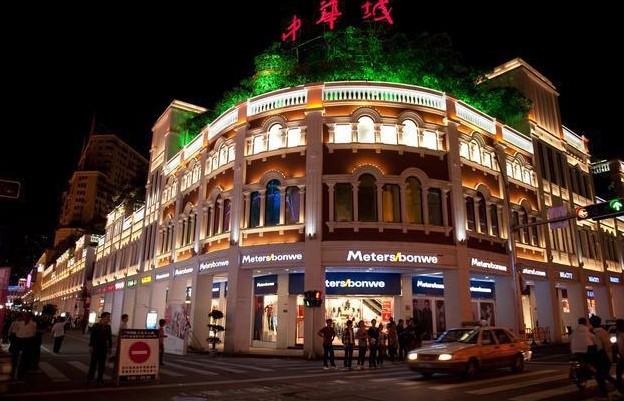Walkway (Walking street, Pedestrian Streets) is a good place for leisure, eating, entertainment and shopping in a city, and it is a characteristic culture of the city. Stroll along the walkways all over China and feel the different cultural atmosphere. There are walkways in many cities in China. This post will introduce you to the 10 most famous walkways in China.
Top Ten Pedestrian Streets in China
#1 Nanjing Road Walkway上海南京路步行街
#2 Wangfujing Walkway北京王府井步行街
#3 Xinjiekou Walkway南京新街口步行街
#4 Jiefangbei Walkway重庆解放碑步行街
#5 Jianghan Road Walkway武汉江汉路步行街
#6 Chunxi Road Walkway成都春熙路步行街
#7 Harbin Zhongyang Street哈尔滨中央大街
#8 Heping Road Walkway天津和平路步行街
#9 Shangxiajiu Pedestrian Street广州上下九步行街
#10 Yat Sen Road Walkway厦门中山路步行街
1. Nanjing Road Walkway上海南京路步行街
Nanjing Road Walkway, located in Huangpu District, Shanghai, starts from Xizang Middle Road in the west and ends at the Bund of Zhongshan East 1st Road in the east. It has a total length of 1,033 meters and a road width of 18-28 meters. 20th.
The Nanjing Road Walkway adopts an asymmetric layout, with a 4.2-meter-wide “golden belt” as the main line running through the entire Walkway. Urban public facilities are concentrated on the “golden belt”, such as seats, shopping kiosks, information kiosks, Billboards, small sculptures, street lamps, waste bins, telephone booths, etc., and there are 34 flower beds with different shapes.
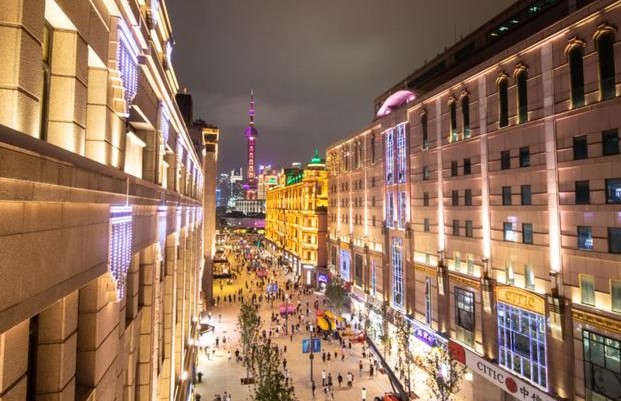
2. Wangfujing Walkway北京王府井步行街
Wangfujing Walkway), located in Dongcheng District, Beijing, China, from Dongdan Santiao in the south to Dengshikou Street in the north, occupying the middle two sections of the fourth section of Wangfujing Street, with a total length of 892 meters and a width of about 40 meters. Renovated in 1999 September 11.
Wangfujing Walkway, the main street is spacious and flat, the ground is paved with red granite, and all the wires are turned underground.
The main attractions of Wangfujing Walkway are Beijing APM Shopping Center, Wangfujing Department Store, Wangfujing Snack Street, New China Children’s Products Store, Danyao Building and Gongmei Building. Among them, Beijing APM, Wangfujing Department Store and New China Children’s Products Store mainly focus on shopping and Entertainment-oriented, oriented to different groups of people; Wangfujing Snack Street brings together special snacks and handicrafts from all over the country; Danyao Building and Gongmei Building are mainly for business offices and conferences.
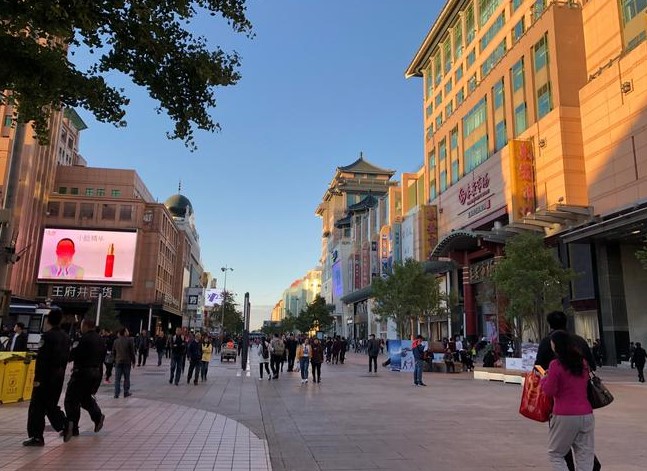
3. Xinjiekou Walkway南京新街口步行街
Xinjiekou is located in the central area of Nanjing, marked by Xinjiekou Square (Bronze Statue of Sun Yat-sen). It is a famous commercial center in China with a history of 100 years and is known as “China’s No. 1 Business District”. In 1929 (the eighteenth year of the Republic of China), the national government began to build the capital Nanjing in accordance with the “Capital Plan”, and Xinjiekou was planned as a commercial area for the first time. Zhongshan Avenue turns east from here, and four boulevards with a width of more than 40 meters, Zhongshan East Road, Zhongzheng Road (now Zhongshan South Road), Hanzhong Road and Zhongshan Road, meet here, forming a circular Xinjiekou Square in the middle, and a bronze statue of Sun Yat-sen as a separator.
In the 1940s, Xinjiekou rapidly developed into a commercial and financial center. Many banks gathered here, making it China’s “Wall Street”; Influential newspaper offices such as Lun Daily, as well as entertainment venues such as Dahua Theater, Xindu Theater, World Theater, and Central Stage also converge here, making Xinjiekou the core of the capital Nanjing. In 2005, Xinjiekou commercial district was rated as a famous commercial street in China; in 2011, Xinjiekou commercial district was rated as one of the first batch of China’s key demonstration urban commercial districts.
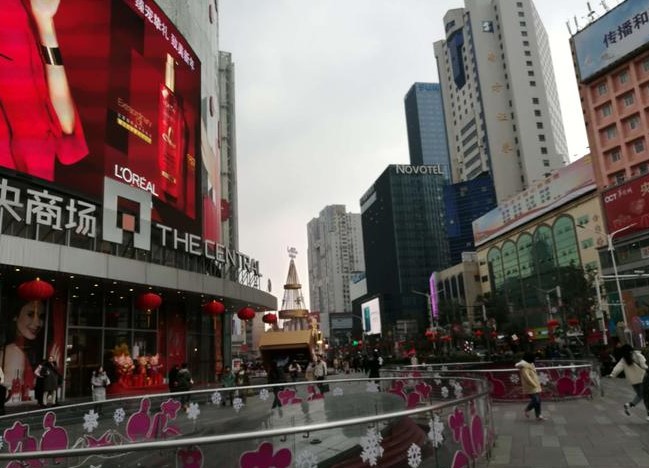
4. Jiefangbei Walkway重庆解放碑步行街
Jiefangbei Walkway, located in Yuzhong District, Chongqing City, was invested 30 million yuan by the Yuzhong District Government of Chongqing City in 1997. Centering on Jiefangbei (People’s Liberation Monument), the Jiefangbei Walkway (Minquan Road, Minzu Road and Zourong Road) is divided into a total of 22,400 yuan. square meters) into the first commercial pedestrian street in western China – Jiefangbei Central Shopping Plaza.
Jiefangbei CBD is composed of the “hard core” Jiefangbei area and the “core edge” Chaotianmen area, which undertakes dual functions of business and commerce. The “hard core” part starts from Xiaoshizi in the east, extends to Cangbai Road, Linjiang Road, and Minsheng Road in the north, extends to Jintang Street in the west, and extends to Heping Road and Xinhua Road in the south, covering an area of 0.92 square kilometers. The “core edge” part includes Chaotian The gate area is 0.69 square kilometers. Chongqing Jiefangbei CBD covers a total area of 1.61 square kilometers.
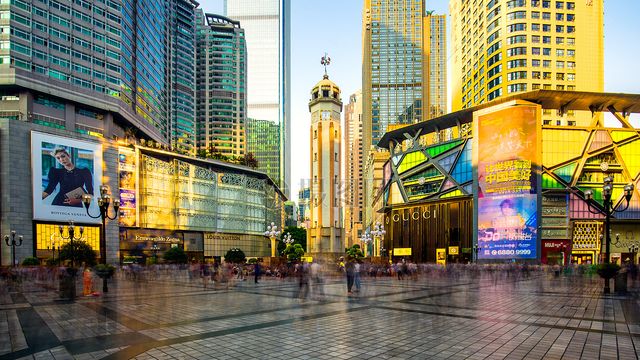
5. Jianghan Road Walkway武汉江汉路步行街
Jianghan Road Walkway is the longest pedestrian street in China. It has the reputation of “the first pedestrian street in the world”. It is located in the center of Hankou, Wuhan City, Hubei Province. It starts from Yanjiang Avenue in the south, runs through Zhongshan Avenue and Jinghan Avenue, and ends in Jiefang Avenue in the north. rice. With a width of 10 to 25 meters, it is a famous century-old commercial street in Wuhan, and it is also the “Wuhan 20th Century Architecture Museum”.
On December 28, 2016, after two years of construction, the reconstructed Jianghan Road and Zhongshan Avenue showed a new look.
Among the 4.7 kilometers of Zhongshan Avenue, the most eye-catching project is Jianghan Road. Zhongshan Avenue, built in 1906, has a history of 110 years and is the most important commercial traffic artery in Old Hankou. Jianghan Road is connected with Metro Line 2 and Line 6 simultaneously, and the century-old Zhongshan Avenue has been transformed into a landscape avenue integrating commercial culture and customs, and gradually aligns with internationally famous commercial avenues.
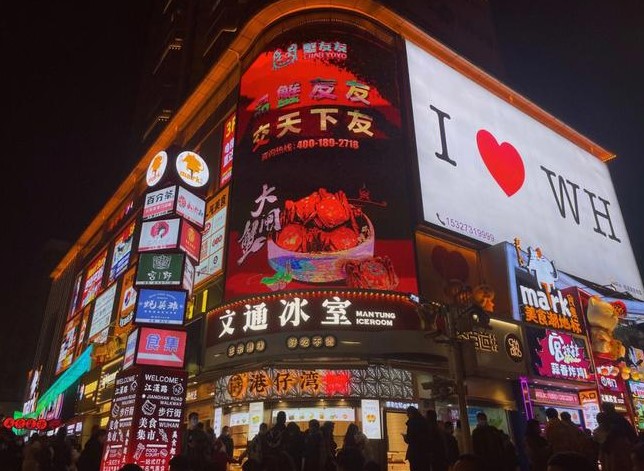
6. Chunxi Road Walkway成都春熙路步行街
Chunxi Road is located in Chunxi Road Street, Jinjiang District, Chengdu City, Sichuan Province, covering the east of Beixin Street, the south of Zongfu Road, the west of Hongxing Road, the north of Dongda Street, Nanxin Street, Zhongxin Street and the frontage area, with an area of about 20 hectares . Chunxi Road is bustling and bustling. There are now about 700 commercial outlets with an area of about 220,000 square meters. It is known as a commercial street with Chinese characteristics in the industry.
Chunxi Road was named in 1924, known as the Centennial Golden Street. It was proposed to be built by Yang Sen, the supervisor of Sichuan Province at that time. Yang Sen ordered all the old yamen to be demolished, and a street from south to north was built here, and then two streets from east to west were built, named Chunxi Road East Section, West Section, South Section Section and North Section. According to relevant historical data, the previous life of Chunxi Road started from merchants, issued orders from the government, and was completed during the warlord period.
More than a hundred years ago, this was the Yamen of the Inspectorate in the Qing Dynasty. The Yamen faced south and covered an extremely wide area. There was a long and deep lane in front of the gate. It is bordered by Lane and opposite is Zouma Street. After the Republic of China, the yamen was abandoned, and many shanty houses and small shops lived in the deep alley in front of Zouma Street. In the former site of the old yamen, a middle school was set up. The former officialdom has turned into a market in an instant, the cries of small vendors, the name and banner of shops, the bargaining of transactions, the noisy voices of people, and the small commodity market has formed in this way.
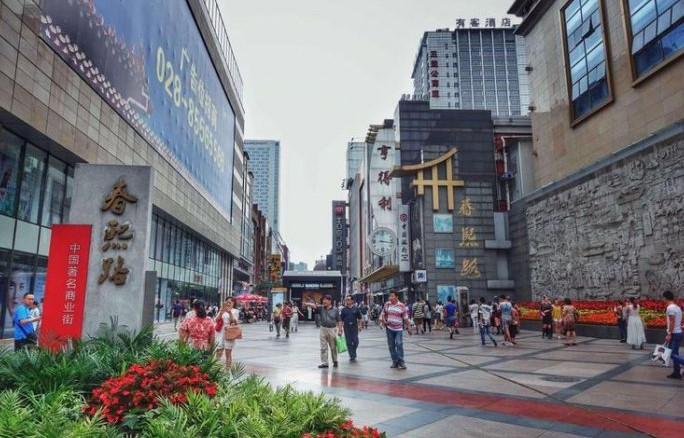
7. Harbin Zhongyang Street哈尔滨中央大街
Zhongyang Street is a very prosperous commercial pedestrian street in Harbin City, Heilongjiang Province. It is located in Daoli District, Harbin. It starts from the Flood Control Memorial Tower Square by the river in the north and connects with Xinyang Square in the south. It is 1,400 meters long. This long street was built in 1900, and the street architecture includes 71 buildings of various styles such as Renaissance and Baroque.
Zhongyang Street, formerly known as China Street, is where Harbin’s western style is located. The formation of this street dates back to 1898. At that time, Harbin began to build railways and urban construction on a large scale. The original river along the river was full of desolate and low-lying meadows. For the Chinese scattered in Harbin, by 1900, “China Street” was formed, which means the street where Chinese people live.
In May 1924, Russian engineer Komtrashok designed, supervised, and laid ashlar for Zhongyang Street. The square stones used for paving are carved and cast from granite, 18 cm long and 10 cm wide.
In July 1928, China Avenue was officially renamed “Zhongyang Street”. Zhongyang Street, shortly after its birth, has become a famous commercial street in Harbin. Because a large number of foreigners settled in to do business, trade flourished unprecedentedly. The rapid development of the economy has stimulated these businessmen to build here.
Zhongyang Street is the epitome of Harbin. Harbin’s unique architectural culture and the European-style life of Harbin people are clearly reflected here, and it is known as “the first street in Asia”.
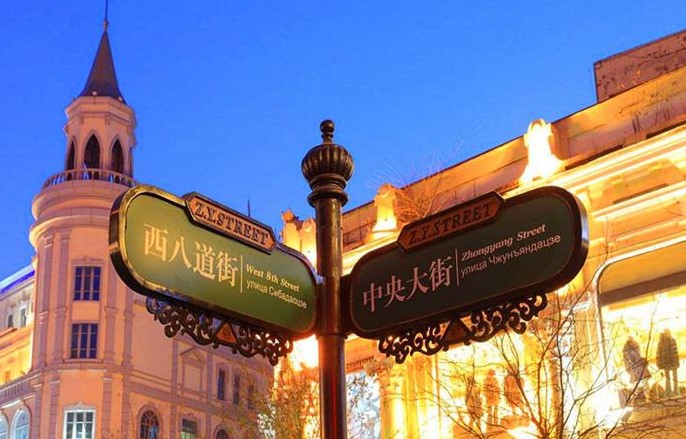
8. Heping Road Walkway天津和平路步行街
Tianjin has been a famous commercial port in northern China since history. There is the longest commercial pedestrian street in Tianjin. Anyone who comes to Tianjin will come here for a stroll. This is the famous Heping Road Walkway. The display of the name plaque of the old store on Heping Road is a major feature and unique charm in the development of Tianjin’s traditional culture. Today’s Heping Road is a multi-functional commercial street integrating shopping, sightseeing, catering, culture and entertainment. When night falls, Heping Road is the most beautiful time of the day.
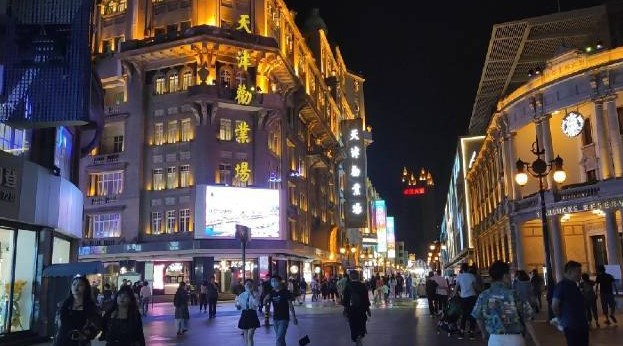
9.Shangxiajiu Pedestrian Street广州上下九步行街
Shangxiajiu Pedestrian Street is located between Shangjiu Road, Xiajiu Road and Shishifu Road in Liwan District (commonly known as Xiguan) of Guangzhou City, Guangdong Province. It is one of the three traditional and prosperous commercial centers in Guangzhou. The total length is more than 1237 meters, and there are many shops along the whole road, with a total of more than 300 shops. A collection of Lingnan architectural culture, Lingnan food culture and Lingnan folk customs in Lingnan culture.
As early as the 620s, this area had become a commercial gathering area. During the Ming and Qing Dynasties, with the establishment of the Huaiyuan Station (on the south side of Xiajiu Road) for receiving foreign envoys and merchants, the opening of the Daguan River, and Shisanhang becoming an important port for foreign trade in Guangzhou, commerce and trade flourished day by day. Merchants gathered from all over the place, making it the largest business distribution center in Guangzhou. Later, Shisanhang was destroyed by fire, and businesses gradually moved to Shangjiu Road and Xiajiu Road. By the end of the Qing Dynasty, this place was the most prosperous, and it was an important window for Guangzhou to conduct trade with the whole country and overseas. [8]
The famous Shangxiajiu Commercial Street is located in the old city of Xiguan, from Shangxiajiu Road in the east to Shishifuxi in the west, across Baohua Road and Wenchang Road, with a total length of more than 1237 meters. Passenger traffic reached 600,000 times. It gathers the old Xiguan food culture, Lingnan food culture and Lingnan folk customs in Lingnan culture. The landmark of Shangxiajiu Pedestrian Street is the arcade street that stretches for kilometers.
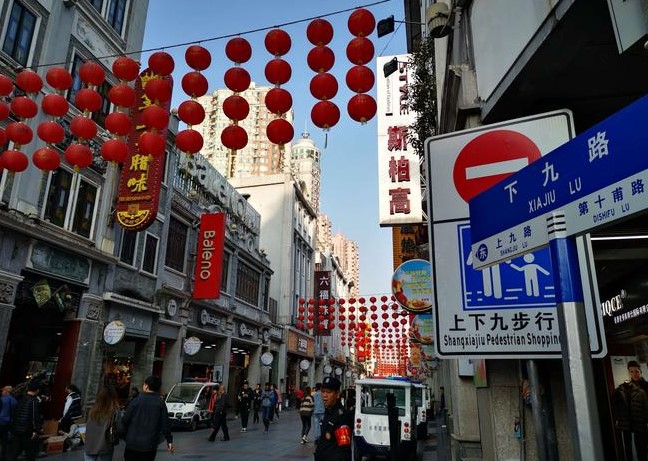
10. Yat Sen Road Walkway厦门中山路步行街
YatSenRoad Walkway is an old-fashioned commercial street in Xiamen, with a large flow of people, a wide variety of products, and strong popularity. When people mention Xiamen, except for Gulangyu, most of them refer to Zhongshan Road, just like Manhattan in New York, Ginza in Tokyo, and Central in Hong Kong. Zhongshan Road represents the prosperity of old Xiamen and is full of the rhythm of the times. Come here to enjoy the rich material world and enjoy the elegance of the old city of Xiamen.
Zhongshan Road is an old city block in Xiamen that has preserved relatively complete modern historical features. The Nanyang arcade building, the radiant LED night view, a variety of Fujian and Taiwan special snacks, and the ancient Nanyin echoing in the alleys and neighborhoods constitute its distinctive style. Zhongshan Road currently has 3 provincial-level cultural relics protection units, 5 municipal-level cultural relics protection units, 1 municipal-level Taiwan-related cultural relics and historic sites, more than 10 historical sites and historic sites, and intangible cultural heritage such as Nanyin. In June 2012, Xiamen Zhongshan Road was awarded the title of “China’s Famous Historical and Cultural Street”.
